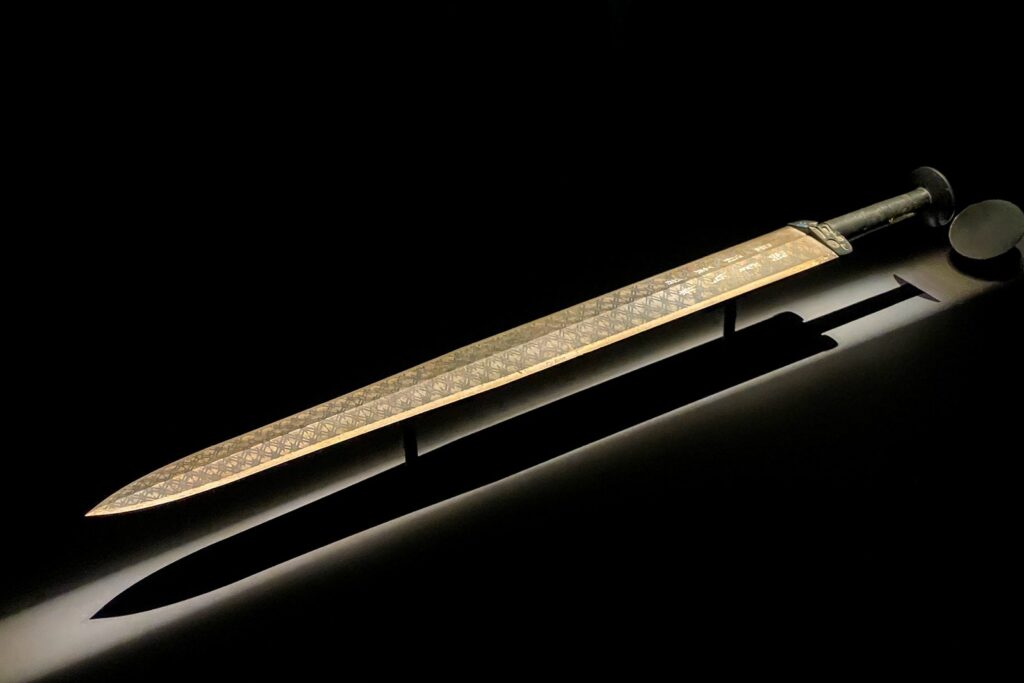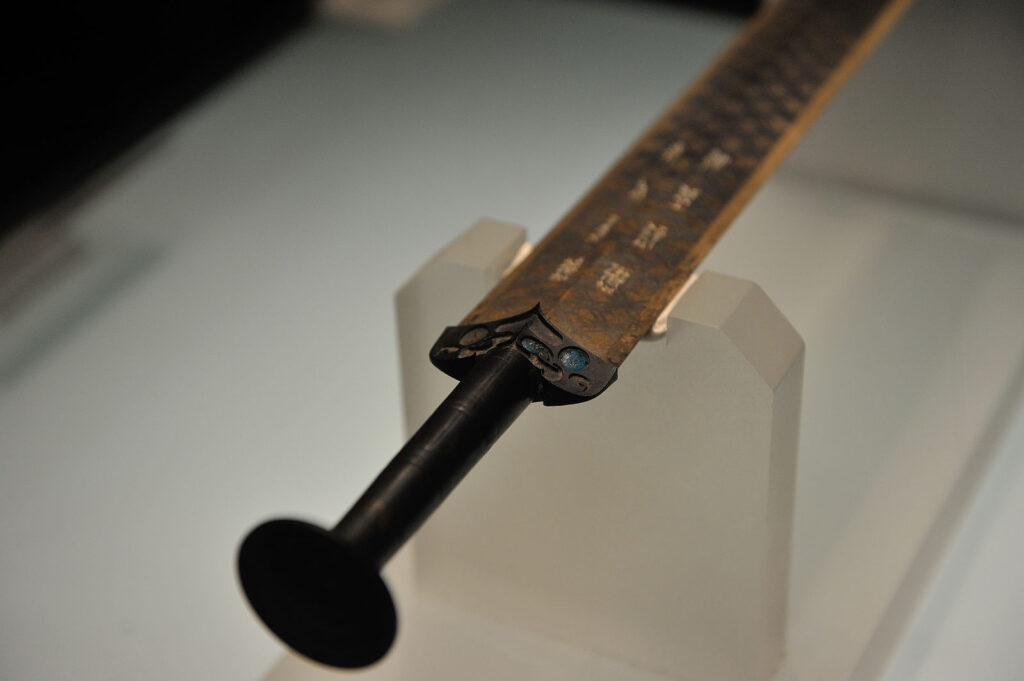If this sword were used in Forged in Fire, it would cut easily through almost anything put in its way. If it were rated for design, it would still probably win the top prize, even though it’s more than 2,000 years old.
It is one of a kind of blade that has so much history behind it, much of which is still a mystery.
In 1965, the Sword of Goujian was discovered during an archaeological survey along the Zheng River Reservoir in China, specifically in the Hubei region. Archaeologists and historians conducted deep studies into the sword and unraveled that it was made around 480 B.C. and used by the Chinese emperor Goujian, who came from the Yue era.
The characteristics of this sword are unique and striking, but it’s also mysterious. How did a sword this old stay in such perfect shape all for all these years? What was it made of that separates it from all other weapons found in that same survey?

The Discovery
While searching the Zhang River Reservoir in Jingzhou, China, in 1965, archaeologists uncovered a series of ancient tombs and more than 2,000 historic artifacts. But it was one specific sword found next to a human skeleton in a water-damaged casket, that provided the most intrigue.
What was most amazing was the condition of the sword. Any artifact from 2,500 years ago soaked in water would seem to show its age and be heavily damaged, as other weapons found in the discovery process displayed.
However, this sword was in perfect condition, looking almost brand new. It was untarnished and had an incredibly sharp edge.
Studies conducted by archaeological experts and historians placed the time period from 771 to 403 B.C. After examining the writing on the sword, it was concluded that it was the weapon of King Goujian, who ruled the Kingdom of Yue from 495 to 465 BC.
Studies done showed that the blade’s surface had undergone a certain level of sulfation. It was not susceptible to oxidation, thus helping preserve it better.
The airtight scabbard and material that was included likely were the reasons for this being able to stay in such perfect shape. Additionally, sword smiths were experts at adding rust-proof alloy materials to the blades during the spring and autumn seasons, keeping the sword in a flawless state.
The Sword’s Characteristics
The sword had an 18.5-inch blade and was notoriously shorter than most others from that era of history. The sword was made of bronze along with a significant amount of copper, helping prove it with the signature color that many sword experts notice today.
Because of the large amount of copper, it had higher pliability. Thus, making it even sturdier and allowing it to withstand the sands of time.
The double-edged blade is wide at the neck, just over 4.5 centimeters wide, and it has an extraordinarily sharp edge because of the use of tin material. This made it ideal for thrusting and slicing through objects.
On one side of the blade, there are columns of writing in Chinese symbols which translate into, “I King Goujian Self Make Use Sword.” The writing clearly indicates that this was Goujian’s sword, likely ordered by him, and used during his reign.
The sword also included rhombic patterns in the design on both sides and a decorated guard, detailed with engravings and precious metals. The blue and turquoise handle is 3.3 inches long and has an open pommel with 11 concentric circles. Historians agree that the handle was likely bound and wrapped in silk during its existence.
The weapon weighed a total of 1.9 pounds, which is considered much lighter and easier to maneuver than most bronze swords from that time. The overall blade with the handle and blade combined was 21.8 inches.
Archaeologists found the sword inside a wooden scabbard finished with black lacquer and preserved inside an airtight wooden box. The skeletons were right next to the sword and were believed to be the owner of the sword himself, King Goujian.

How the Sword Was Used
Given the sword was made for a king, it had all the distinct materials in it that would make it top of the line. Given its size, it was a one-handed weapon when used for warfare purposes, with the owner likely holding a shield in the other hand.
Given its lightweight, it would have been easy for a professional to maneuver it and kill his enemy.
However, the sword was more likely used for ceremonial purposes, especially given the designs and blue crystals it comprised. In times of peace, Gioujian likely carried it around to show prestige and power, making him look stronger.
Today, many manufacturers have tried to mimic the sword, adding the same designs and selling it off as a “Gioujan Sword.” Today’s Gioujan swords, however, are made more from high-carbon steel, something that wasn’t around in the BC era. This steel makes the sword even more fierce than it was 2,500 years ago.
Gioujan was known for his perseverance and leadership and had undergone a difficult upbringing before becoming king. Once a captive of Wu, he would sometimes eat bile just to remind himself of the humiliation he suffered when undergoing torture.
Where is the Sword Today?
You may have seen Forged in Fire and wondered if you were seeing the real Gioujan sword being swung. Nope, the actual Gioujan sword is being held securely inside a Hubei provincial museum in Wuhan, China. Tourists can travel to this region and see this sword up close.
There is some light damage to the sword that occurred in Singapore in 1994 when the weapon was loaned out for display. The worker who took it out accidentally damaged it. The blade has about a quarter-inch crack that’s visible up close.
For those interested in seeing the famous sword, the museum is open on Tuesdays through Sundays from 9 a.m. until 5 p.m.
References
“Sword of Gioujan.” AtlasObscura.com. Nd. https://www.atlasobscura.com/places/sword-of-goujian#:~:text=The%20archaeologists%20found%20the%20sword,see%20such%20a%20pristine%20artifact..
Mickov, David. “Gioujan Sword: The World’s Oldest and Most Preserved Sword.” Swordis.com. 7 Dec 2022. https://swordis.com/blog/goujian-sword/.